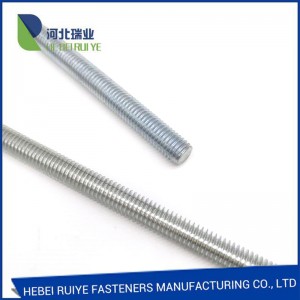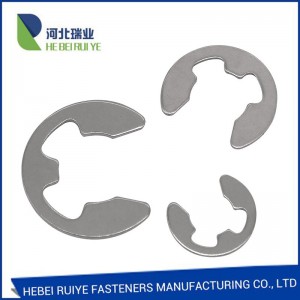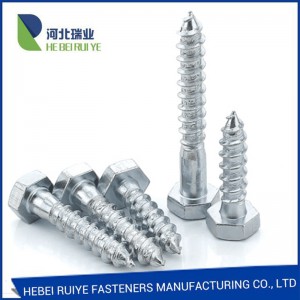Loto Faʻasaʻo / Stud Bolt DIN975
Manoa uʻamea DIN975, silasila lanu 201 304 316 faʻatautaia o le faʻaogaina o le filo filo. 1m 2m 3m eseese le uumi ma le lautele.
Lanu: siliva / lanumoana lanumoana
Faʻapipiʻi faʻamatalaga: Faʻamatalaga o oloa i le paʻu paʻu → Palani laupapa;
Tuuina atu: I luga o le ea, i luga o le sami poʻo i luga o le auaunaga
Totogi totogi: T / T, Faʻatasiga i Sisifo
O le a le filo filo?
O se ie ua tu, ua lauiloa foi o se atigilima, o se tootoo umi lava lea e pipii i pito uma e lua; o le filo e mafai ona lautele atu i le umi atoa o le tootoo. Ua mamanuina ina ia faʻaaogaina i le vevesi. O le tootoo faʻapipiʻi i le pepa faʻamau pepa e masani ona taʻua o le filo.
Ituaiga:
With respect to shape, stud bolts a.k.a. studs are categorized into 3 basic types: "Fully Threaded Stud Bolts", "Tap End Stud Bolts", and "Double End Stud Bolts". Each of these studs have different application. As name suggests, fully threaded studs have full body coverage with threads for full engagement of the matings nuts or similar parts. Tap end studs have threads at extreme ends of the body with unequal thread engagement length, while double end stud bolts have equal thread length at both ends. Apart from these there are stud bolts for flanges which are fully threaded studs with chamfered ends, and double end studs with reduced shank for special bolting applications. For studs that are not completely threaded, there are two types of studs: atoa-malolosi studs, ma undercut studs. O totoa o le tino e tutusa ma le matua lautele o le filo. E leai se mea e tasi e tutusa ma le maualuga o le sikulima. Ua faʻatautaia le faʻaaogaina o 'au e sili atu le tufatufaina atu o aʻafiaga o aʻafiaga. I totonu o le aoga atoa e sili atu le mamafa i le filo nai lo le fagu.
Faʻamatalaga fesili pe faʻamatalaga faʻamaonia faamolemole faafesootaʻi mai.




















